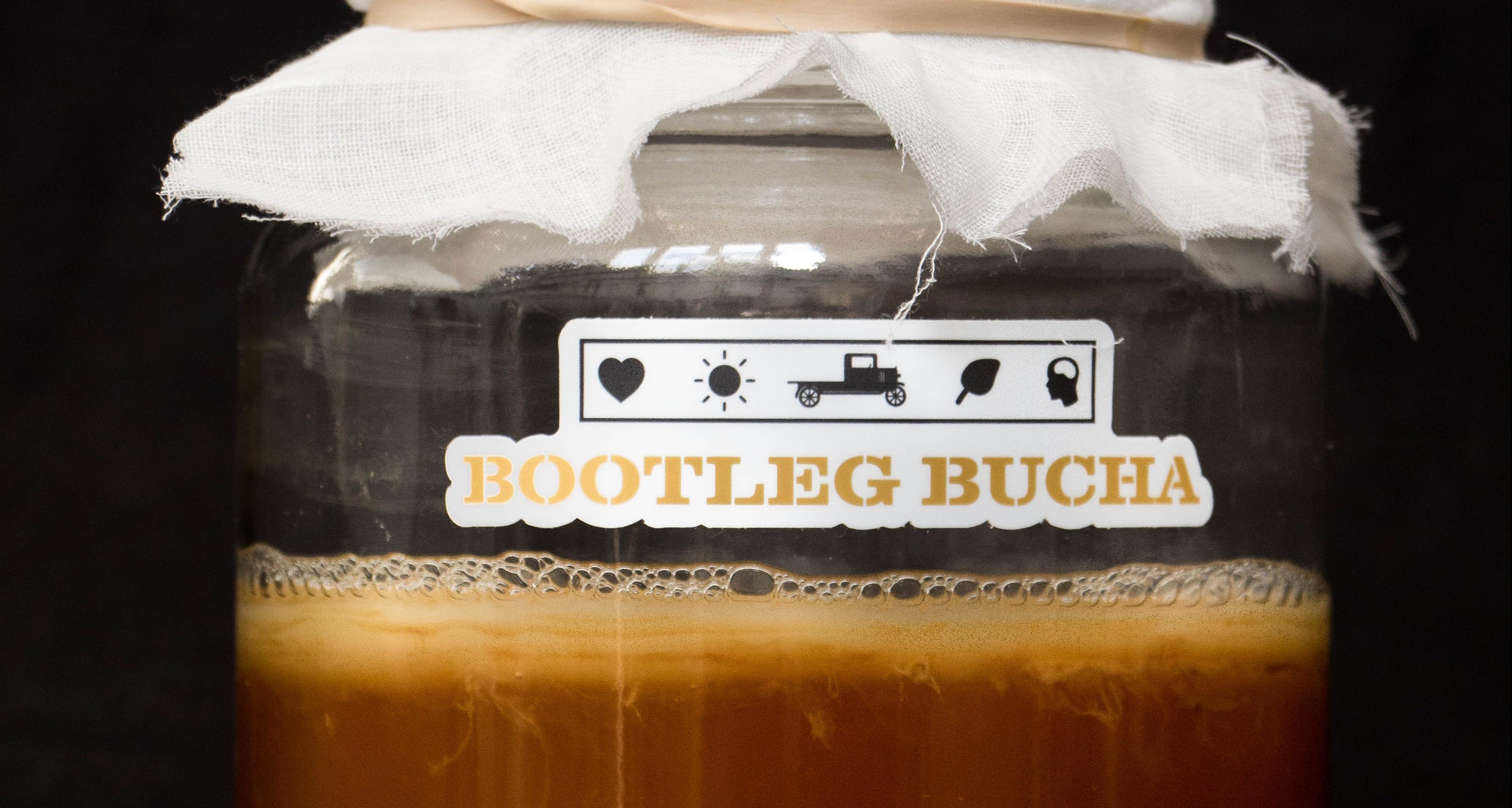The definition of kombucha is as follows:
While the process of making kombucha dates back well over 2,000+ years, it’s recent popularity has created many producers using recipes with different levels of authenticity. We’ve always been open and transparent about our process for creating a true kombucha:
- Brew tea (many teas can be used for different flavor profiles, we always use organic).
- Add sugar to feed fermentation (we use organic, raw, fair trade sugar).
- Once the tea is below 95 degrees, add starter tea + SCOBY (Symbiotic Colony of Bacteria & Yeast).
- Ferment in an open container with fabric to allow airflow.
- Transfer to sealed vessel and add herbs and juices (again…it’s organic for us).
- Chill between 33 – 40 degrees until consumed.
This process takes approximately one to three weeks (varies due to many factors) from start to finish. It is critical for the presence of probiotics (good bacteria), antioxidants, vitamins and amino acids. The end result is a raw , probiotic and lightly carbonated beverage. Ours just happens to be lower in sugar than other kombuchas, too!
Why is this important?
This process results in raw, biologically active kombucha. The fermentation process continues as long as bacteria and yeast have sugars to feed on. Yeast are temperature sensitive, and cold temperatures keep them less active.
We pride ourselves in sticking to kombucha’s ancient origins and maintaining a raw product as we grow. Keeping kombucha cold, is important to ensure the quality remains consistent and compliant. So, if you see kombucha in a non-refrigerated environment, that is a strong indicator that it is not raw and true to the definition of kombucha. Kombucha that is not raw does not follow the natural process and therefore has been altered to mimic the taste and health benefits of kombucha. It’s important to note that with pasteurized kombucha, the process is not the same, the cost is not the same, the benefits are not the same and most importantly the profits are not the same. Raw kombucha requires time, equipment, expertise and is an artisanal craft beverage. It’s much easier (and cheaper) make something taste like kombucha with probiotics added at the end than to slowly ferment and monitor a traditional raw batch of bucha.
All kombucha is not equal.
We wish it was as easy as reading the label, but unfortunately it is not. A good place to start is on the ingredients label. Label regulations require ingredients to be listed in descending order with the first being most predominate and the last being the smallest component.
- If you see “100% Raw Live Kombucha” as the first ingredient—you are in luck! It’s hard to argue with that.
- If you see “Live Probiotic Drink” then it’s not “Raw Kombucha”.
- If you see a “Live Probiotic Culture” as the last ingredient, this indicates they are added after production. Using the word “live” is under scrutiny in this use as well, unless it is raw & live during the whole process.
- Look for the Bootleg Bucha name on the label and you’ll know you are always getting live, raw kombucha.
Thanks for keeping it real, we’re doing our best to keep kombucha the same. Find 100% raw kombucha near you.

